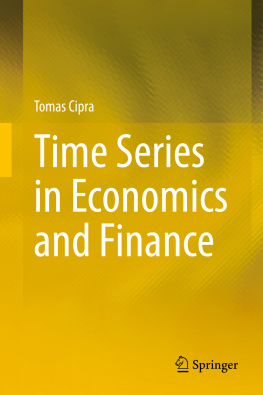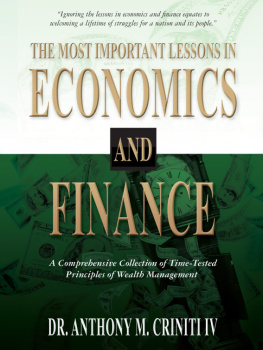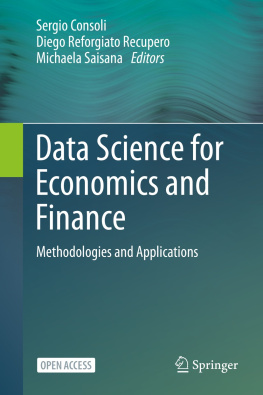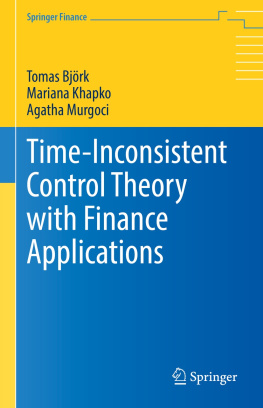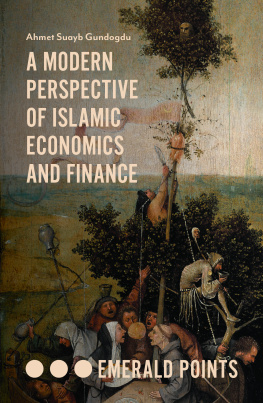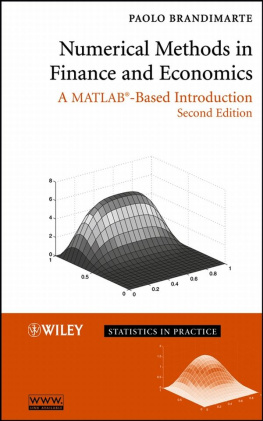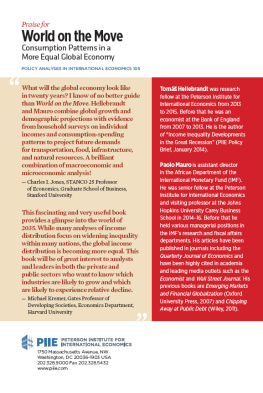Tomas Cipra - Time Series in Economics and Finance
Here you can read online Tomas Cipra - Time Series in Economics and Finance full text of the book (entire story) in english for free. Download pdf and epub, get meaning, cover and reviews about this ebook. publisher: Springer International Publishing, genre: Computer. Description of the work, (preface) as well as reviews are available. Best literature library LitArk.com created for fans of good reading and offers a wide selection of genres:
Romance novel
Science fiction
Adventure
Detective
Science
History
Home and family
Prose
Art
Politics
Computer
Non-fiction
Religion
Business
Children
Humor
Choose a favorite category and find really read worthwhile books. Enjoy immersion in the world of imagination, feel the emotions of the characters or learn something new for yourself, make an fascinating discovery.
- Book:Time Series in Economics and Finance
- Author:
- Publisher:Springer International Publishing
- Genre:
- Rating:3 / 5
- Favourites:Add to favourites
- Your mark:
- 60
- 1
- 2
- 3
- 4
- 5
Time Series in Economics and Finance: summary, description and annotation
We offer to read an annotation, description, summary or preface (depends on what the author of the book "Time Series in Economics and Finance" wrote himself). If you haven't found the necessary information about the book — write in the comments, we will try to find it.
Time Series in Economics and Finance — read online for free the complete book (whole text) full work
Below is the text of the book, divided by pages. System saving the place of the last page read, allows you to conveniently read the book "Time Series in Economics and Finance" online for free, without having to search again every time where you left off. Put a bookmark, and you can go to the page where you finished reading at any time.
Font size:
Interval:
Bookmark:
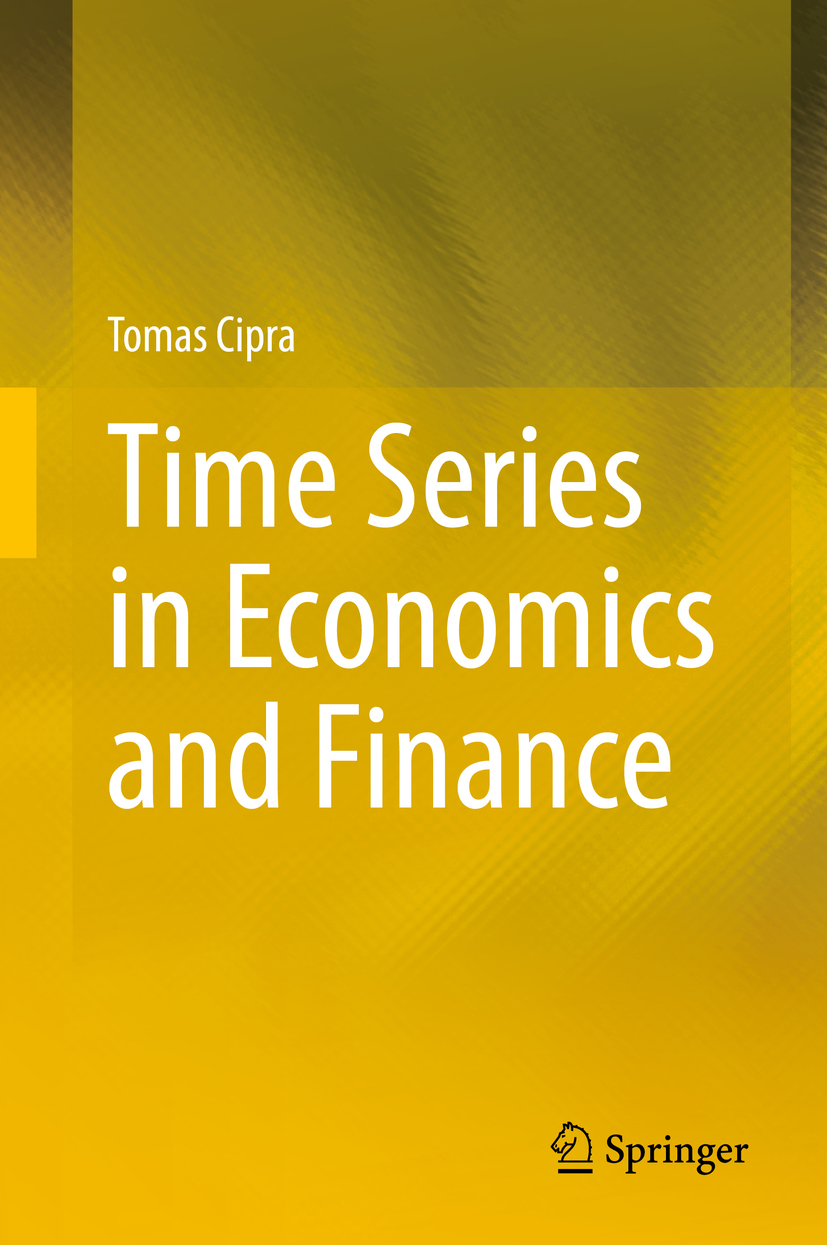

This Springer imprint is published by the registered company Springer Nature Switzerland AG.
The registered company address is: Gewerbestrasse 11, 6330 Cham, Switzerland
Most data in economics and finance are observed in time (sometimes even online in real time) so that they have the character of time series. This monograph presents methods currently used for analysis of data in this context. Such methods are available not only in many monographs, textbooks, or papers but also in various journals or working papers, case studies, or guides to the corresponding software systems. This text tries to bring together as many methods as possible to cover the most recommended instruments for analysis and prediction of dynamic data in economics and finance.
The objective of this book is the practical applicability. Therefore, it centers on the description of methods used in practice (both simple and complex ones from the computational point of view). Their derivation is often concise (if any, particularly in more complicated cases), but one always refers to easily available sources. In any case, a lot of numerical examples illustrate the theory by means of real data which are usually chosen to be characteristic for the presented methodology.
Selected parts of the text are suitable for university programs (undergraduate, graduate, or doctoral) concerning econometrics or calculation finance as study, training, or reference materials. Moreover, due to the complete survey of actual methods and approaches the book can serve as a reference text in research work. On the other hand, it can also be recommended for people dealing with analysis of data in economics and finance (banks, exchanges, energetic planning, currency and commodity markets, insurance, statistical offices, demography, and others).
The presented material requires mostly the application of suitable software. Fortunately, the corresponding programs are easily available since they can be found in libraries of common statistical or financial software systems (R Statistical Software, MATLAB, EViews, and others can be recommended). There are several reasons supporting ready-made software: (1) calculations (e.g., in Excel) are usually troublesome (particularly for users with superficial knowledge of programming); (2) software manuals are usually helpful in various individual situations, and, moreover, the parameters of programs are preset as default values suitable for the immediate (routine) application; and (3) when browsing through the offer of software systems, one discovers other methods or modifications which can be useful for the solved problem. On the other hand, the potential user should not be only a software consumer sharing all drawbacks of the given software product. Moreover, the qualified users should be capable of interpreting the computer outputs in a proper way since they understand principles of the chosen methods.
The monograph consists of several parts divided into particular chapters:
Part I (Subject of time series, Chap. ) deals with the subject of time series which are looked upon as trajectories of random processes.
Part II (Decomposition of economic time series, Chaps. ) is devoted to the classical approach decomposing economic time series to trend, periodic (seasonal and cyclical), and residual components. Some of more advanced methods are also addressed, e.g., tests of periodicity or randomness.
Part III (Autocorrelation methods for univariate time series, Chaps. ) summarizes so-called BoxJenkins methodology based on (linear) ARMA models and their modifications (ARIMA, seasonal ARMA, long memory processes) for univariate time series. Some more actual topics are also mentioned in this context (e.g., information criteria or tests of unit root). Finally, dynamic regression models are presented in Part III including distributed lag models.
Part IV (Financial time series, Chaps. presents a very actual topic of risk measures (value at risk and others). Extreme value theory is also mentioned in this context, namely block maxima and threshold excesses.
Part V (State space models of time series, Chaps. ) concludes the monograph considering the multivariate time series. At first, the popular vector autoregression (VAR) model is presented including tests of causality, impulse response, variance decomposition, cointegration, and EC models. The multivariate volatility modeling is also described including multivariate EWMA and GARCH models with a practical application for conditional value at risk. Finally, the (multivariate) state space models as the background of Kalman filtering are discussed including the state space model approach to exponential smoothing.
Some parts of this monograph serve as lecture notes for courses of time series analysis and econometrics at the Faculty of Mathematics and Physics of Charles University in Prague (it is also the reason why some real data used in practical examples are taken from the Czech economics and finance).
Font size:
Interval:
Bookmark:
Similar books «Time Series in Economics and Finance»
Look at similar books to Time Series in Economics and Finance. We have selected literature similar in name and meaning in the hope of providing readers with more options to find new, interesting, not yet read works.
Discussion, reviews of the book Time Series in Economics and Finance and just readers' own opinions. Leave your comments, write what you think about the work, its meaning or the main characters. Specify what exactly you liked and what you didn't like, and why you think so.

